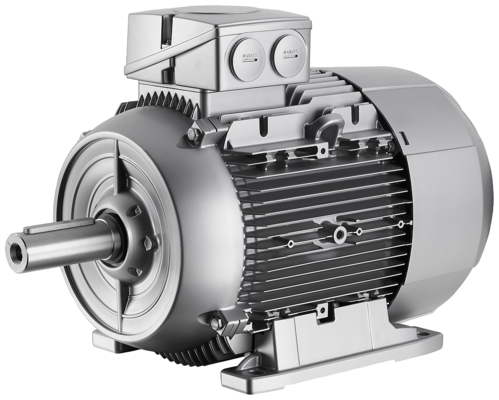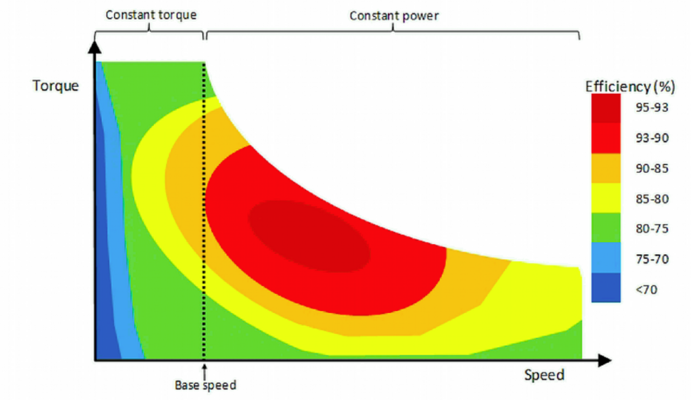Around the world, legislation relating to electric motor efficiency is tightening in an attempt to reduce carbon emissions and damage to the environment. However, far less attention is paid to some of the practicalities.
Motors are the greatest consumers of electricity in the world, with about 70% of all power generated being used by them. Since the Rio Earth Summit a generation ago, there has been a continuous effort to improve motor efficiency, with much effort being put into drafting efficiency standards and new testing methods for newly manufactured motors, which get gradually tighter over the years. However, this approach misses the point that there is a huge number of motors already in use around the world and their efficiency does not come under anything like so much scrutiny. So, a review of the motors in your place of work may well lead to the identification of significant improvements to your energy efficiency, carbon footprint and saving on your utilities bill. If you use machine tools, automated manufacturing systems, conveyors, or other 'technical' equipment, each of these is likely to use a number of motors. If you have air-conditioned offices, there will be motors driving pumps and fans. Medical equipment, displays, test stands, lifts, escalators, extractor fans in kitchens and laboratories are all motor-driven and, typically, their efficiency may never have been checked...
All motors should have their efficiency checked and it may be best to start with those motors that are used a lot; if a motor runs constantly or for long periods, any inefficiency will have a compounding effect over time. Other motors that would be worth investigating early include those that are more than 7-10 years old, that have been repaired or rewound, that were originally installed for one purpose but have since been switched to a different duty, or those that appear to be oversized for their role. In essence, a motor's efficiency is the ratio between the electrical power input to the motor and the mechanical power it outputs. Both types of power are measured in kilowatts or horsepower, so are directly comparable. The Energy-related Products (ErP) Directive however changed the testing method of how the efficiency has been calculated. This means that the IE efficiencies for a particular motor may be declared lower than it was under EFF efficiency rating scheme.
All motors have a rated load, but most are designed so that they run over a range of loads. Typically, the load will be 50% to 110% rated load and generally, motors are at their most efficient at 70% to 80% load. The drop-off in efficiency can be very significant outside of this small optimum window, particularly in smaller motors. Fortunately, there are several quick and easy ways to check that a motor is optimally loaded. The simplest is probably to feel its temperature (be careful, it could be very hot). If it is unusually warm it is probably overloaded. The next step is to check the nameplate values on the motor and compare these with the calculated load. This will require a little technical knowledge and some interpretation. It is important to note that the stated values for the motor are only true at the rated motor voltage, so the supply voltage must be checked too. Further, the total load on the motor may be the sum of several separate loads including the driven load and mechanical losses in the transmission system.
At this point power factor may need to be considered. Power factor is the ratio between the theoretical or calculated power being supplied and the actual power delivered to the motor. Again using a multimeter, the power in the mains near the motor can be measured. If a power factor correction unit is present, the theoretical and actual values will be very similar giving a small power factor ratio. Larger power factor ratios must be incorporated into relevant calculations. The next step is to calculate the power output. A simple practical method to do this is to compare the rated and actual output speeds of the motor. The rated speed is calculated from the theoretical speed of a motor and is related to the frequency of the supply and the number of poles in the motor. The actual speed can be measured using a tachometer, strobe light, calculated from production rates etc. There are other methods for calculating motor efficiency; these may include special devices, computer models or complex analytical processes. In practical terms, the best answer may be to bring in an expert, who will probably be able to check ten motors in the time it would take you to do one!
There is no absolute answer to the question 'What is acceptable efficiency for an installed motor?" In each case you have to compare the current efficiency to the potential improved efficiency and work out the energy/cost implications over the duty cycle and remaining life of the installed motor. Once you have determined the efficiency of each motor you have to decide whether to accept it, rebuild it, or replace it. As a general rule, smaller motors are better replaced than repaired; it's a cheaper option and automatically ensures that the latest efficiency standards are being met. With larger motors, the repair/replace decision is harder and unique to each situation. However, we can define a rule-of-thumb strategy along the lines of:
- Motors that are significantly oversized or inefficient should be replaced with properly sized ones that meet current efficiency standards fairly urgently.
- Motors that are moderately oversized or somewhat inefficient should be replaced when appropriate.
- Motors that are properly sized but older should be replaced with modern high efficiency units when appropriate.
- Sometimes, fitting a variable-speed drive to an existing motor will pay significant efficiency dividends.
- Check the duty cycle of each motor: if there is a lot of idling time, consider PLC control to switch it off instead.
- Some motors are deliberately oversized so that they have a bit of extra power in reserve to overcome stiction, blockages, icing, etc. A properly sized motor and variable-speed drive will provide the same effect far more efficiently.
- And finally, developing a motor management strategy may be best done with the help of your expert.

























































